These images are part of a larger report: Congressional Threats to Health Programs Could Harm Millions of New Jerseyans.
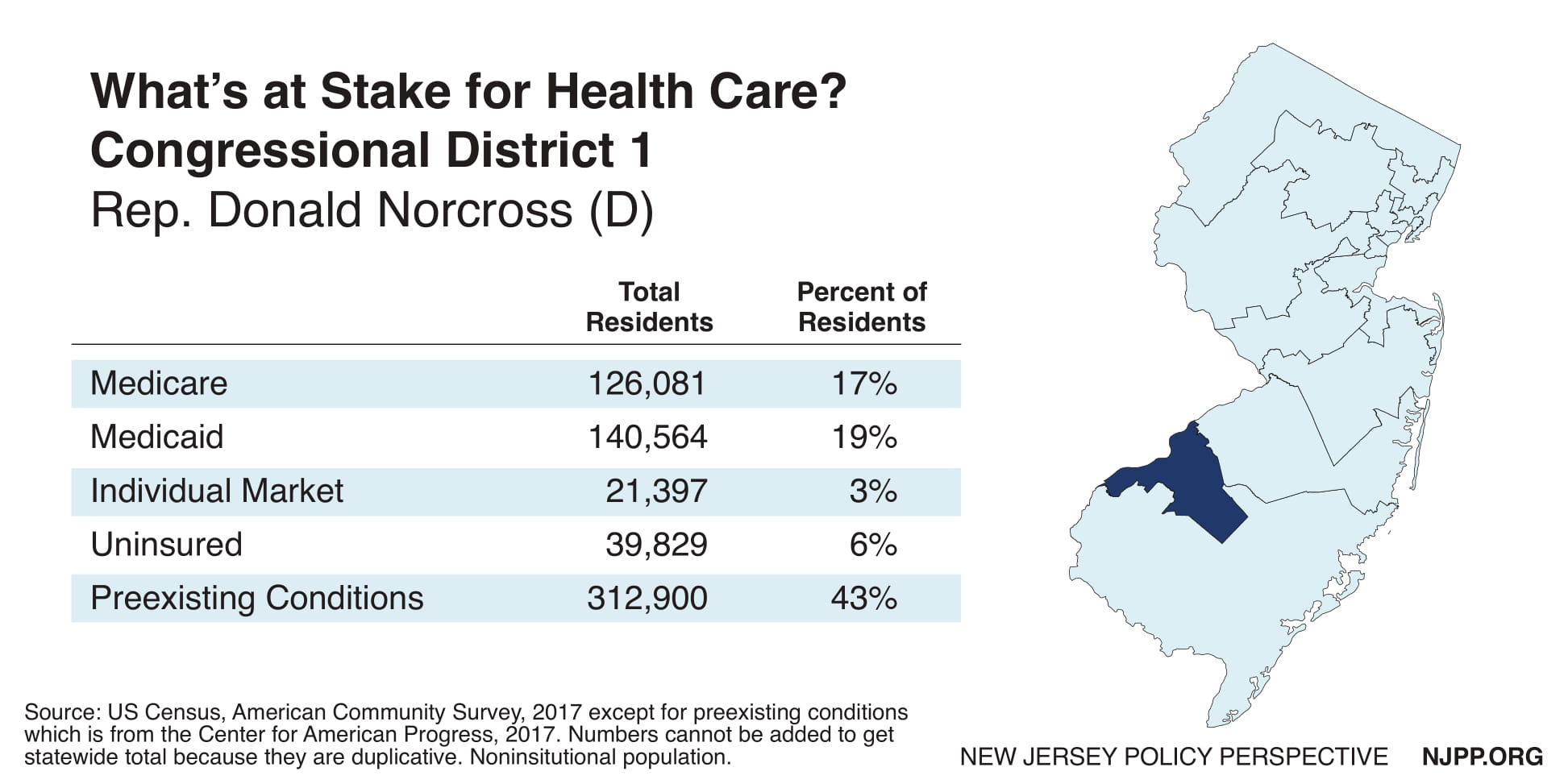
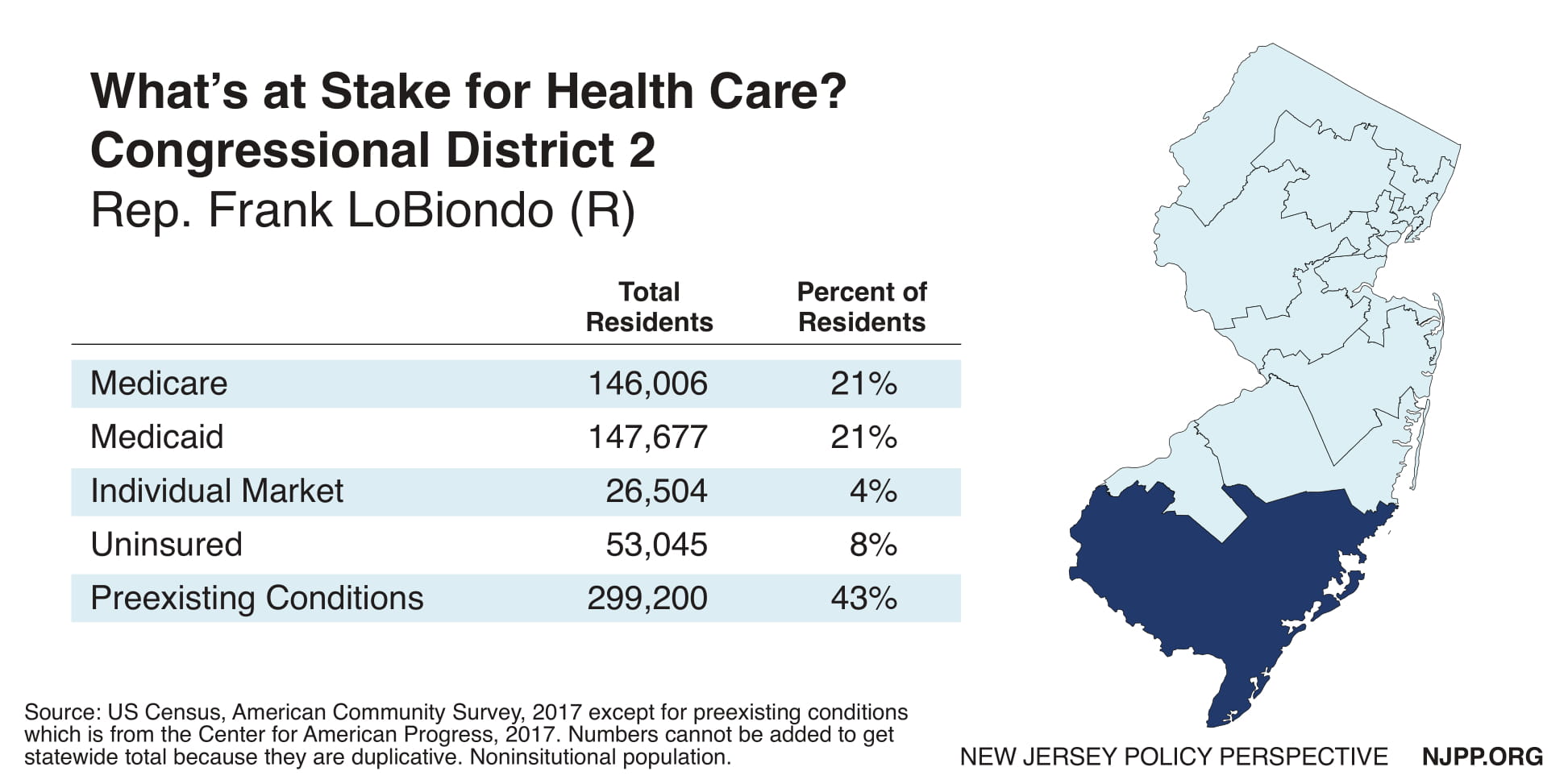
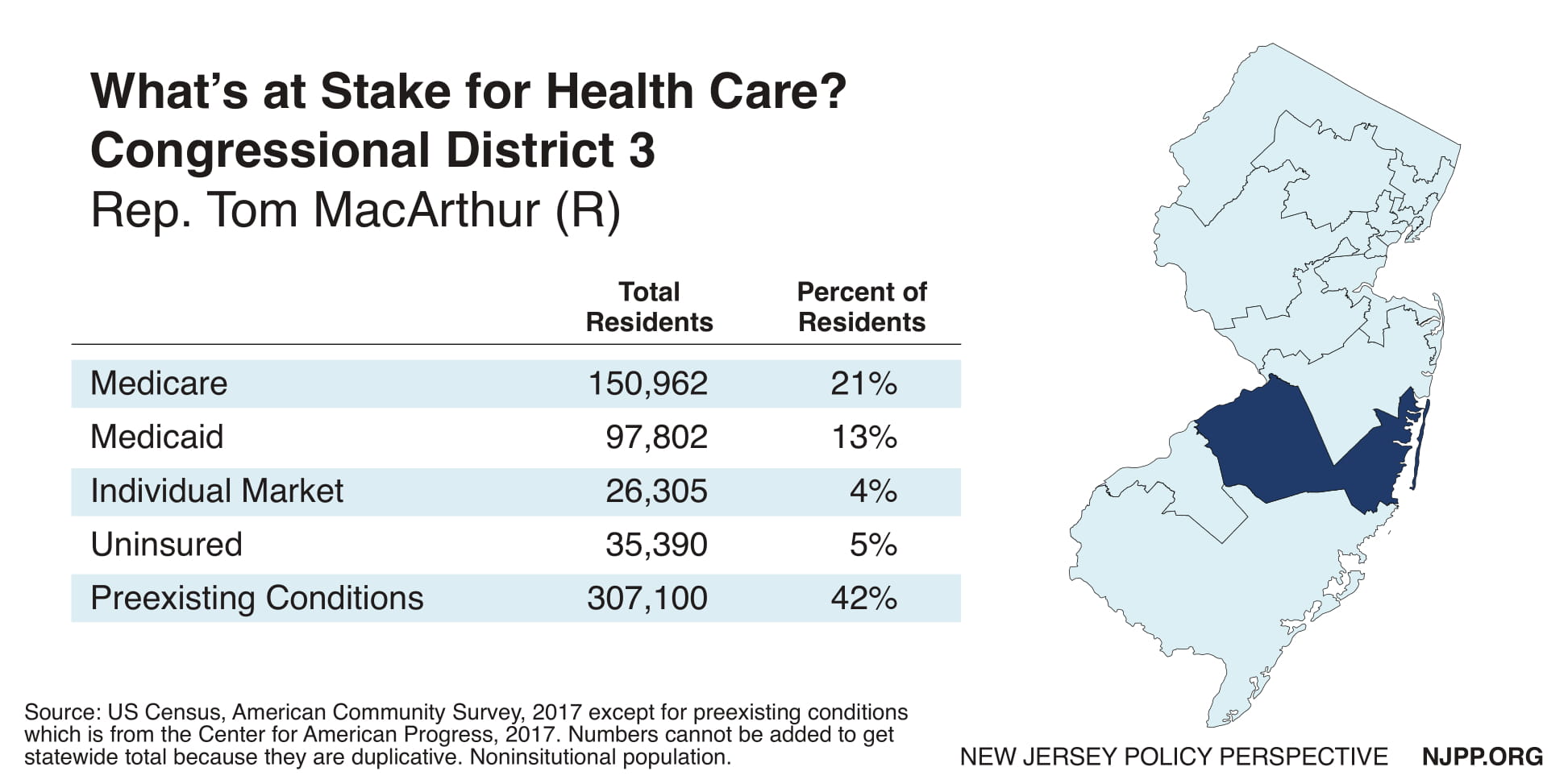
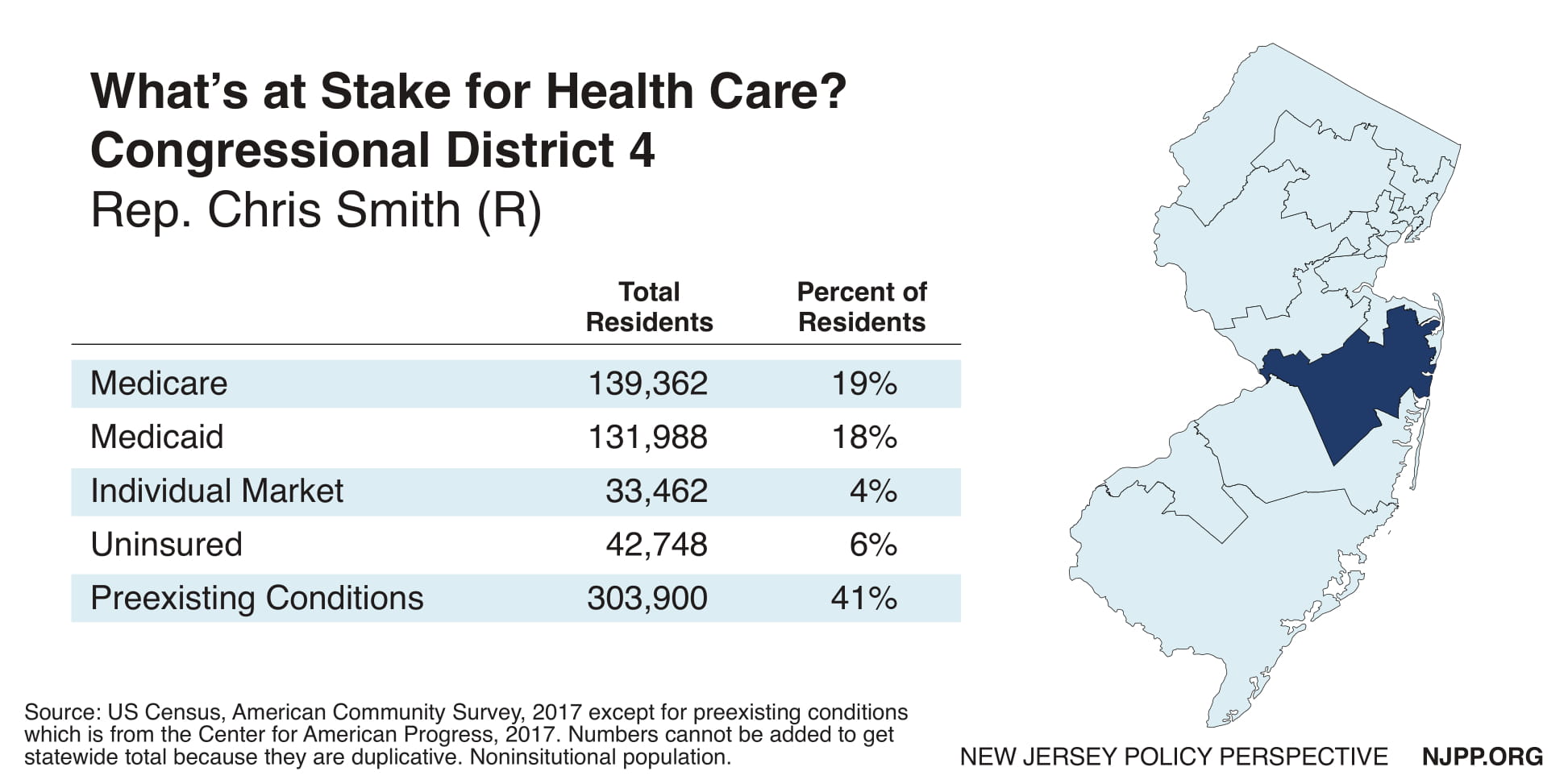
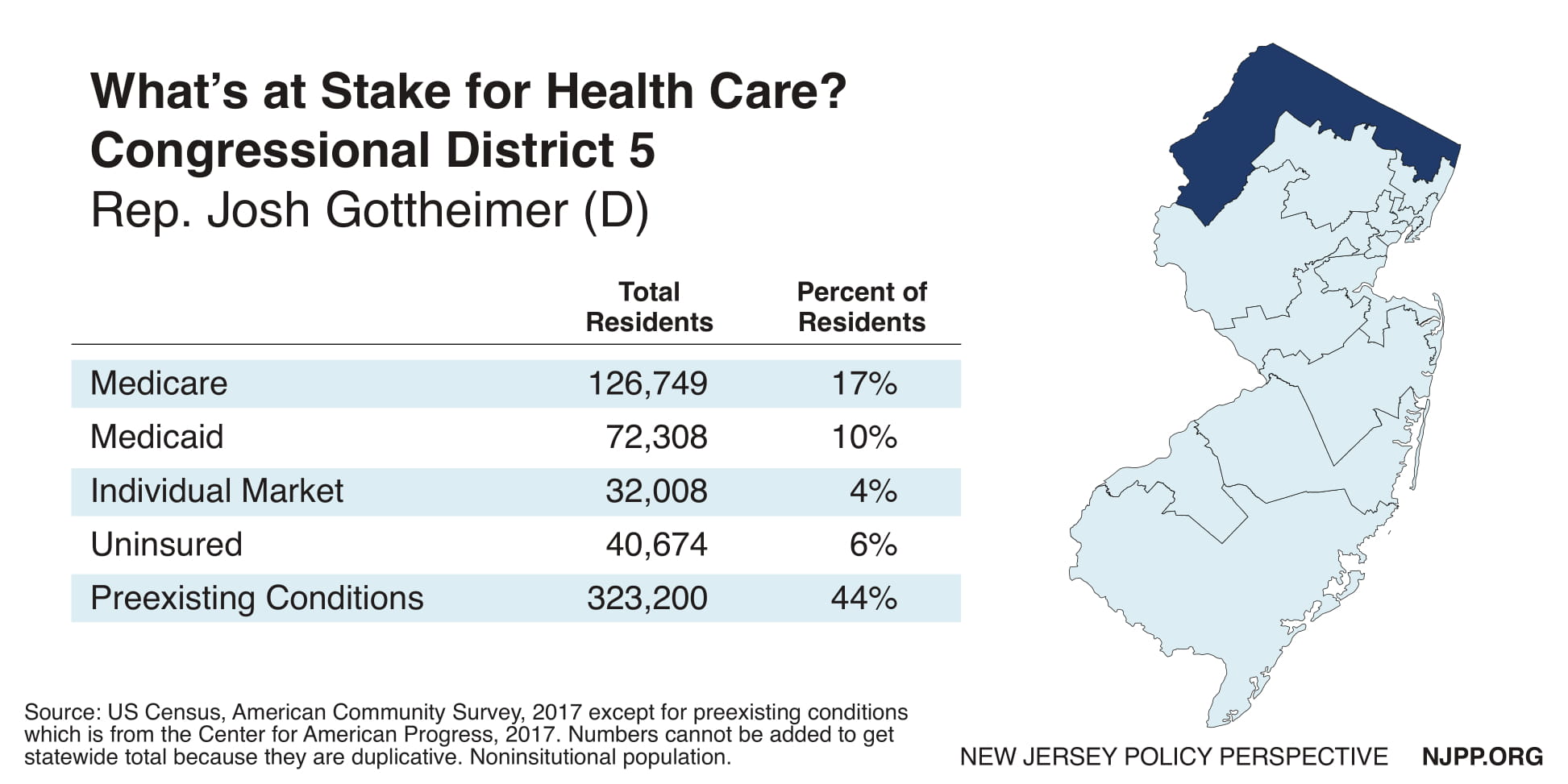
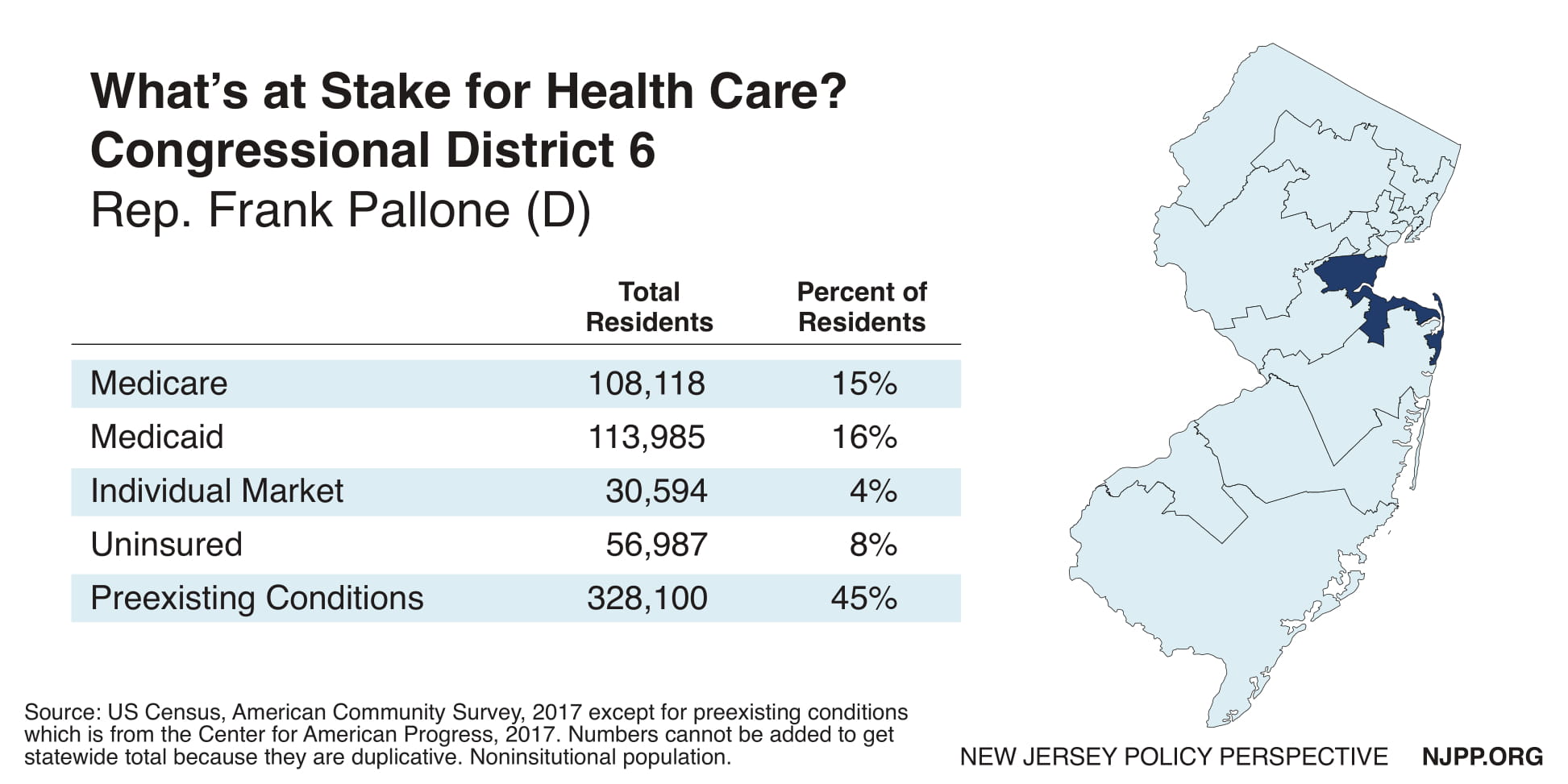
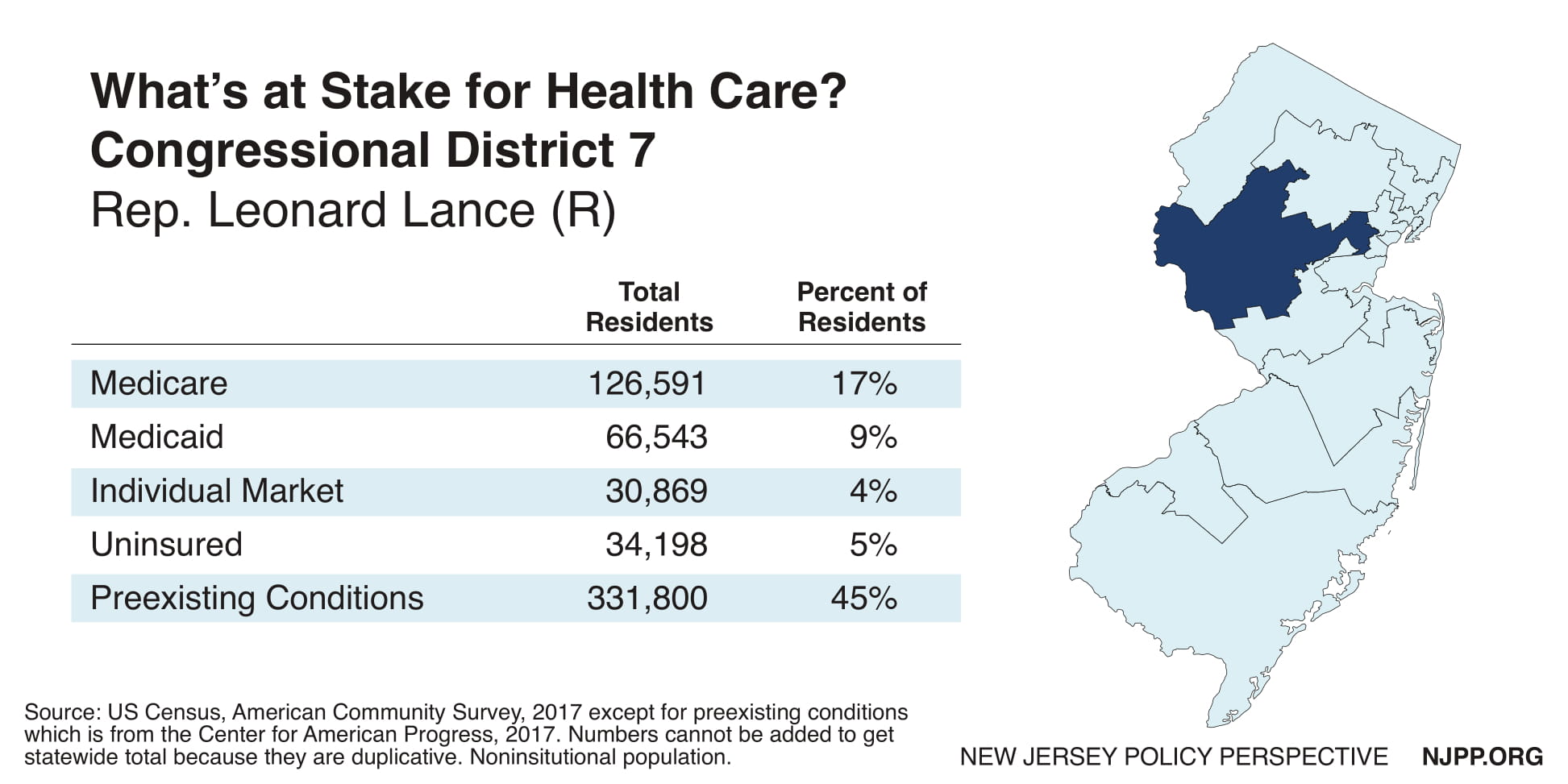
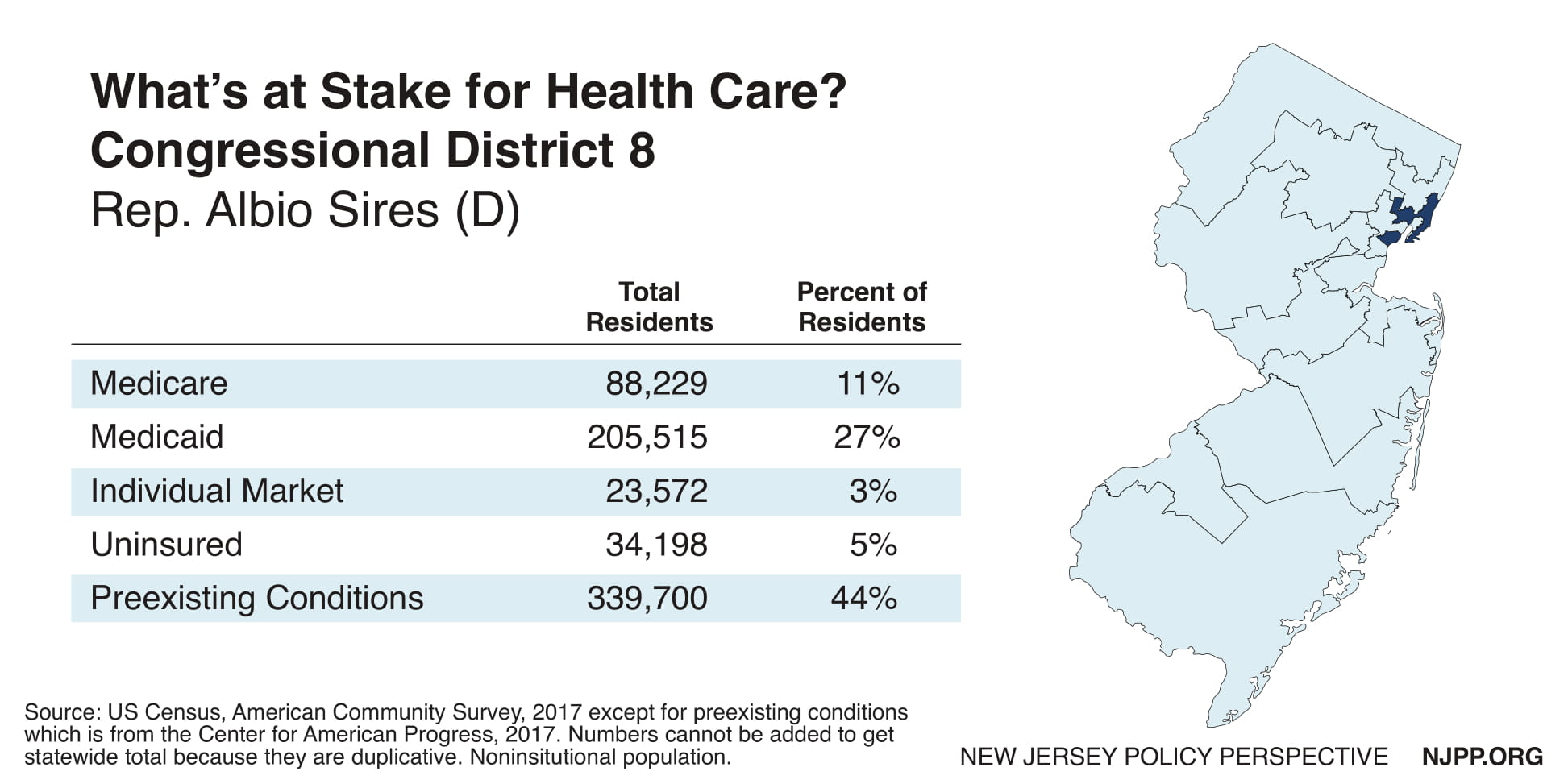
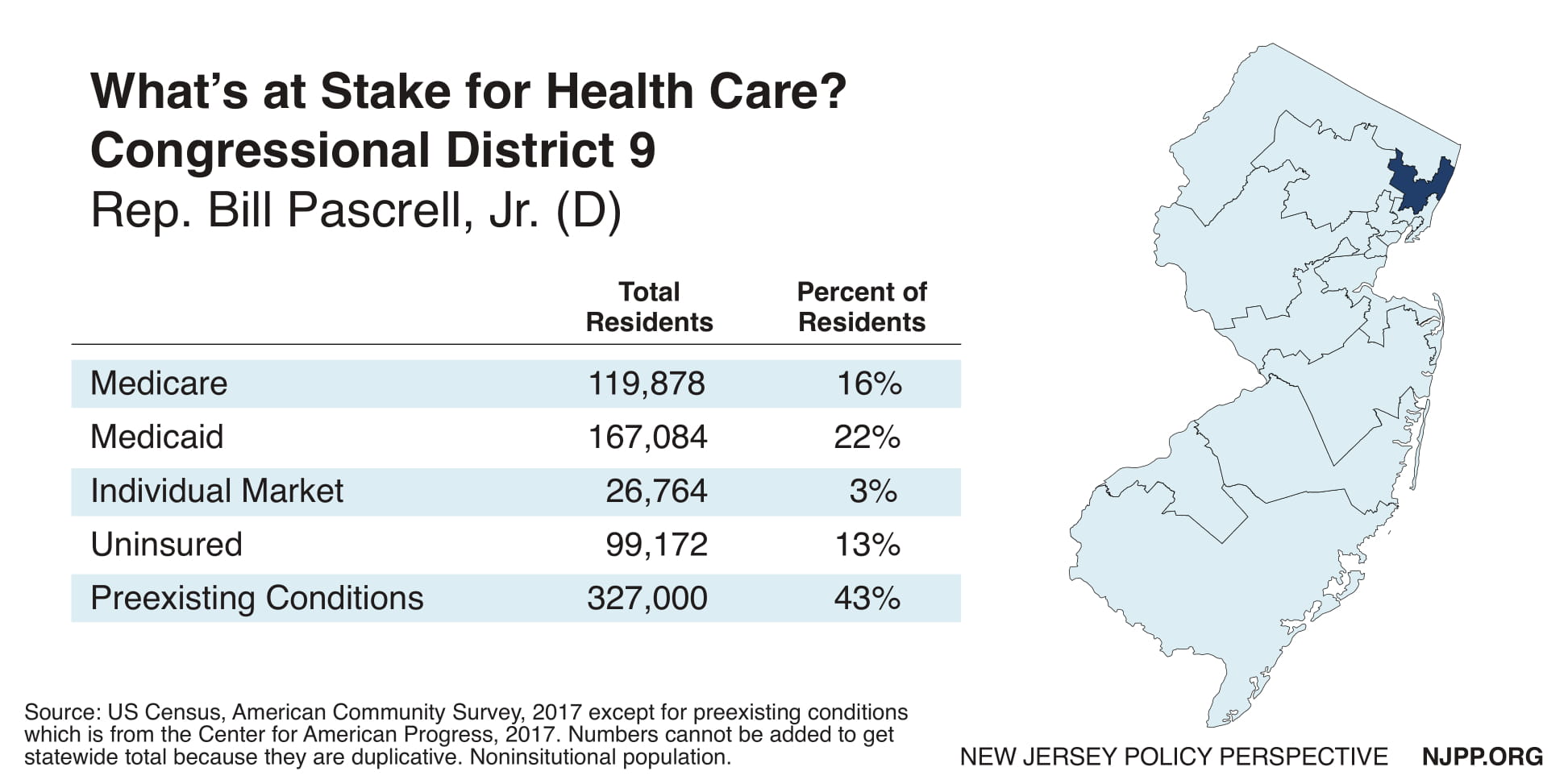
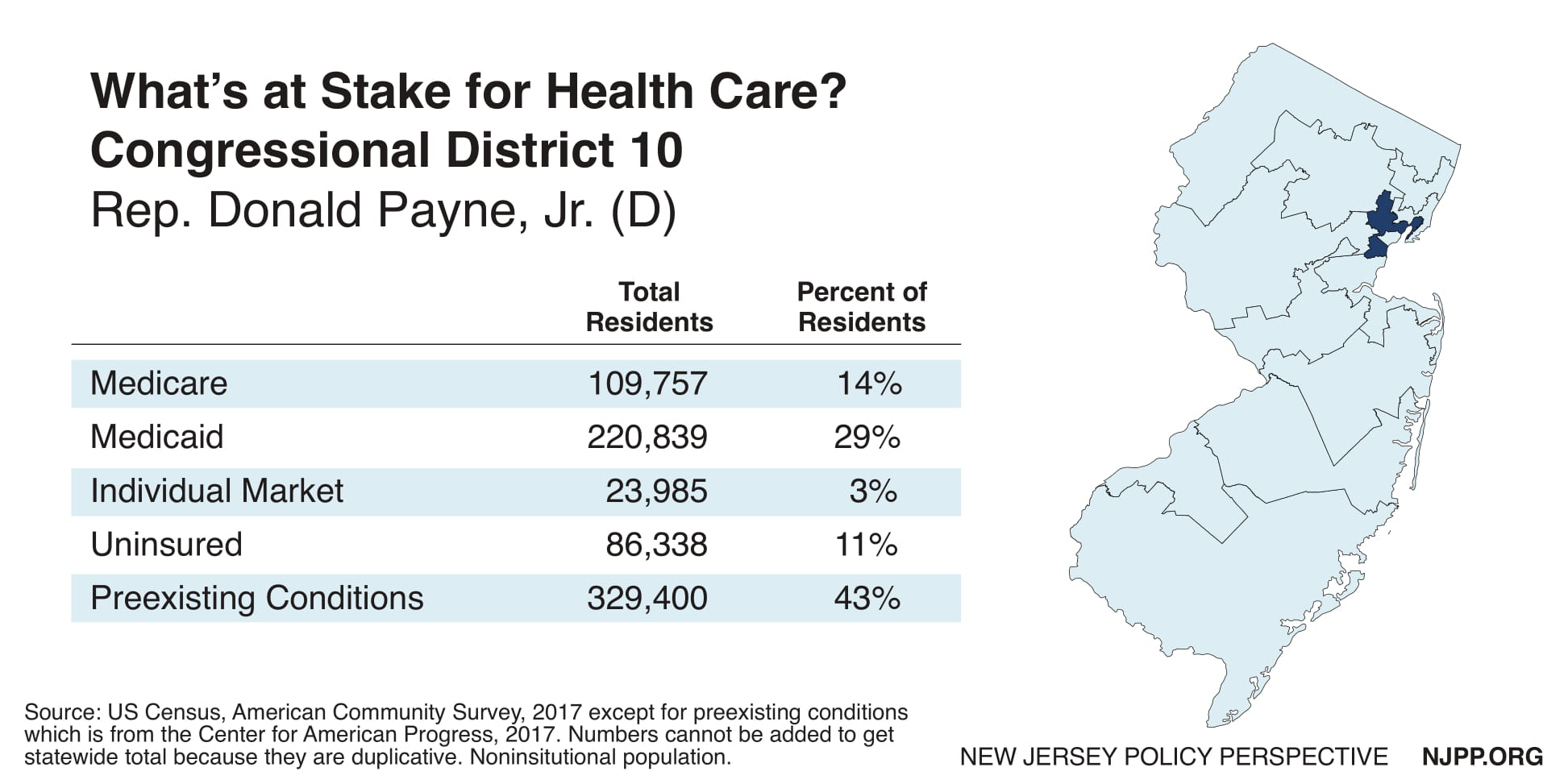
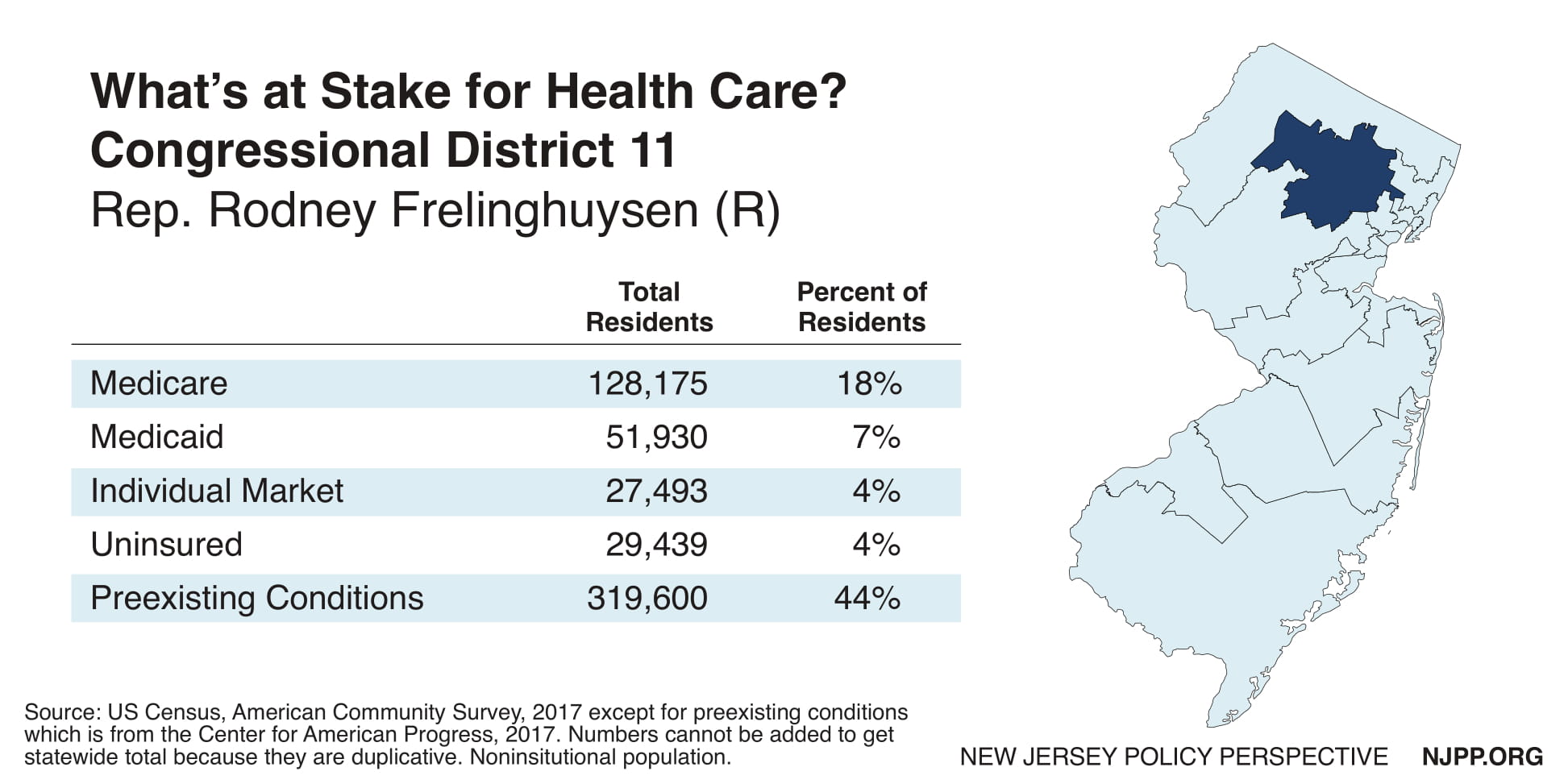
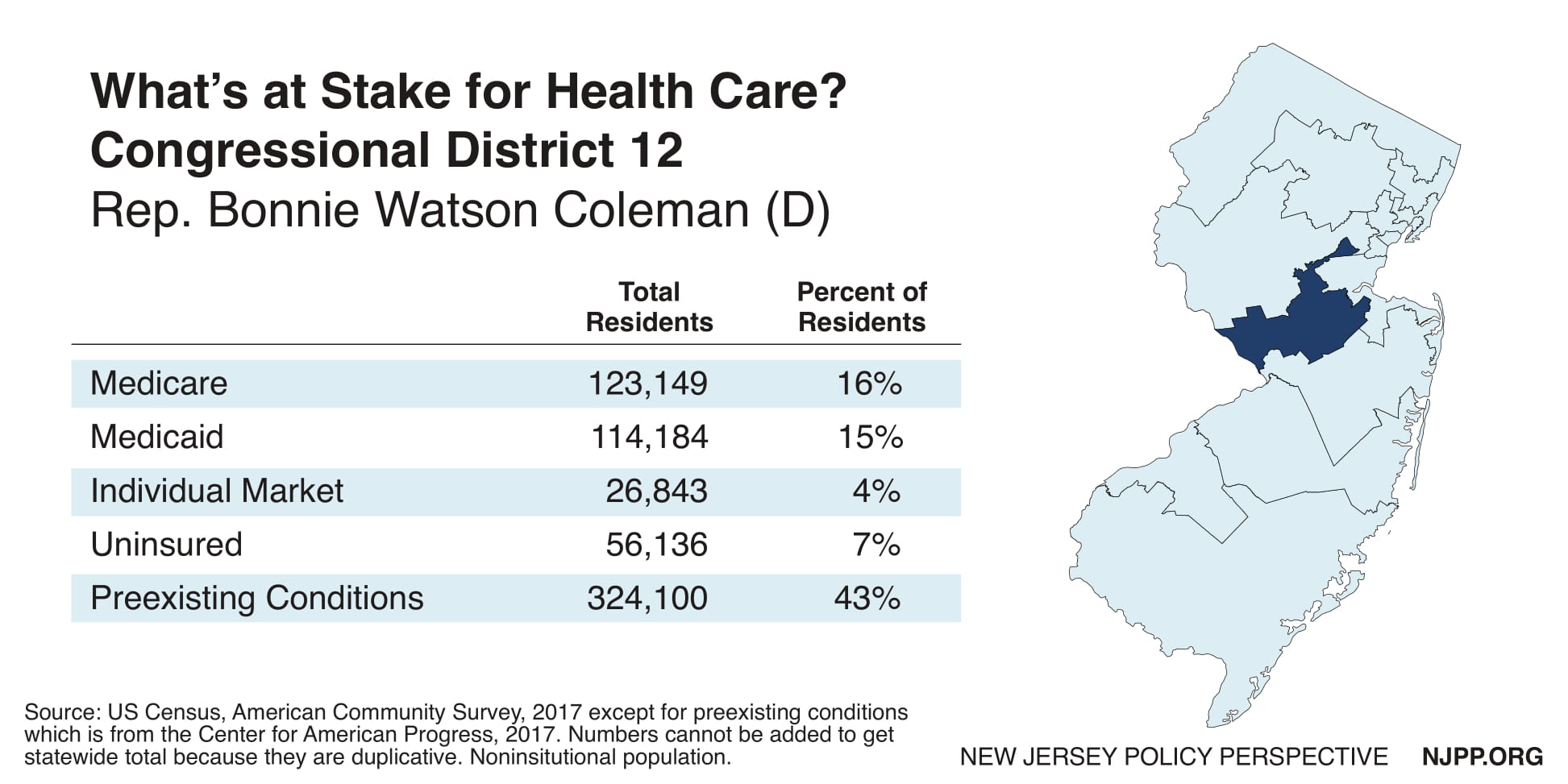
These images are part of a larger report: Congressional Threats to Health Programs Could Harm Millions of New Jerseyans.












New Jersey is poised to become the 13th state in the nation to allow all residents, regardless of immigration status, to apply for a driver’s license. Doing so would increase public safety, bolster the state’s economy, and increase the well-being of all families, particularly the hundreds of thousands of New Jersey residents who would gain the right to legally drive.
How many New Jersey residents would benefit from expanded access to driver’s licenses?
There are approximately 466,000 undocumented immigrants in New Jersey who are of driving age and would be eligible for a license. Based on the experience of other states, NJPP estimates that half these eligible New Jerseyans – 233,000 – would receive a license within the first three years of implementation, a 3.8 percent increase in the total number of licensed drivers in the state. A higher number would likely apply for a license, but not everyone who applies passes the written and road tests.
Would allowing undocumented immigrants access to obtaining a driver’s license and insurance under their name increase premiums?
No. There is no evidence that undocumented immigrants obtaining a driver’s license raises premiums for the average driver. In fact, having more insured drivers who have been tested, trained, and licensed on the road would make everyone safer. Since auto insurance is compulsory in New Jersey, universal driver’s licenses would allow for thousands of drivers to obtain auto insurance coverage, thereby reducing the number of uninsured drivers, a cost that is currently borne by all insured motorists.In Utah, which has allowed undocumented immigrants to drive legally since 1999, the uninsured motorist rate dropped by 20 percent.
Do undocumented immigrants qualify for the Special Automobile Insurance Policy (SAIP), also known as the dollar-a-day auto insurance policy?
No. Undocumented immigrants do not qualify for the dollar-a-day (SAIP) auto insurance policy because they are not eligible for federal Medicaid benefits. Undocumented immigrants are barred from all social safety net programs (i.e. NJ Family Care, TANF, SNAP).
Do you need a social security number (SSN) to obtain auto insurance?
No. Insurance companies are not required by law to ask for a driver’s social security number (SSN). Insurers may ask for an SSN in their auto insurance application, but disclosing an SSN is not mandatory to obtain auto insurance.
Does auto insurance coverage or cost vary depending on the type of license you have? For example, some states have Real ID license; does it matter if you have a Real ID compliant license?
No. Having a certain kind of license does not bar individuals from certain types of insurance coverages. Also, under the current proposed expanded driver’s license legislation, insurance companies are barred from assigning anyone with the proposed provisional license to a rating plan.
Will drivers who obtain a license be vulnerable to violations of privacy if they get into an automobile accident?
Potentially. Ideally, restrictions to automobile accident reports would protect drivers from unsolicited legal notices that can mislead or scare people into thinking they need a lawyer simply because they were in an auto accident. People with provisional driver’s licenses should be confident that an auto accident does not jeopardize their privacy or subject them to unnecessary medical treatment and fraudulent activity.
To read a PDF version of this report, click here.
Once it is fully phased in, the federal tax proposal released by conference committee on December 15 would raise taxes for the average middle-class and low-income New Jersey family while cutting taxes for wealthier families and for large corporations. At the same time, it would increase the number of New Jerseyans without health insurance by 340,000 by 2027 thanks to the repeal of the Affordable Care Act’s individual mandate,[1] and would tee up deep and devastating budget cuts that would harm working families across New Jersey.
While all income groups in New Jersey on average would see a tax reduction in 2019 under the final GOP plan, it’s important to look at the impact in the year 2027, since the bill includes both permanent provisions (the tax cuts for corporations and a tax hike on working families through a change to how inflation is measured) and temporary provisions that expire after 2025 (the rest of the bill that directly affect families and individuals). Unless otherwise noted, this fact sheet looks at the impact on New Jersey families in 2027.
New Jersey households with incomes over $1.4 million (the top 1 percent) would receive an average $8,470 tax cut while the bulk of Garden State families (the bottom 60 percent, or those with incomes under $111,000) would see a tax hike averaging $110.[2] Taken all together, those families in the top 1 percent would receive 63 percent of the state’s share of the tax cut – $384.1 million in total – while the bottom 60 percent would, together, receive less than 0 percent of the tax cut, since they’d pay a total of $331 million more in taxes under the plan.
In all, about 1 in 4 New Jersey taxpayers (26 percent) would see a tax hike under the GOP bill,[3] a slightly lower share than the nation as a whole (27 percent) and the 22nd highest of the 50 states.
The plan is a clear example of Robin Hood in reverse, as it gives the largest average tax hikes to New Jersey’s poorest families while showering the state’s very wealthiest families with the biggest tax cuts. While just 1.6 percent of the state’s wealthiest 5 percent of families would see a tax hike, 31 percent of families in the bottom 60 percent would. That share of tax hikes for middle- and lower-income families is the 15th highest of the 50 states.
The final GOP bill is more similar to the Senate-passed bill than the House-passed bill, as you can see by looking at the impact of all three plans on New Jersey.
Big tax cuts for corporations – specifically a cut in the corporate income tax from 35 percent to 21 percent – are the centerpiece of the GOP tax plan. After all, they comprise most of the parts of the final plan that are permanent, while nearly all of the smaller tax cuts and changes for individuals and families are temporary. As a result, these breaks for corporations end up driving the overall impact of the GOP tax plan once fully phased in, as well as the plan’s inequity.
That’s because slashing the top corporate tax rate by nearly half will primarily benefit owners of corporate stocks, according to Congress’ own Joint Committee on Taxation.[4] In fact, despite President Trump’s insistence that average working families will get a “$4,000 pay raise” from this tax plan, just 25 percent of the long-term benefit of a corporate tax cut will go to workers.[5]
And of that already small share, an even smaller piece will go to middle-class or low-income workers, since fewer than half of all Americans own any stock, and overall shareholder wealth is – like most of the rest of the country’s wealth – extremely concentrated at the top (the top 10 percent of Americans own about 80 percent of the value of the total stock market, according to leading economist Ed Wolff).[6]
The bulk of the benefit from the corporate rate cut – three-quarters of it, in fact, – will go to shareholders, and a good chunk of that will flow to foreign investors, who own about 35 percent of stocks in American corporations.[7]
Unfortunately, the pain for New Jersey’s working families does not end with the direct impact of this tax bill. In fact, the tax bill is step one of Congressional Republicans’ two-step tax and budget agenda that would rip the American social contract to shreds, undo decades of progress for working Americans and send the country hurtling even faster toward a new gilded age.[8]
Here’s how this two-step agenda works. First, enact costly tax cuts now that are heavily skewed toward wealthy households and profitable corporations. Next, use the cost of those tax cuts and their negative impact on the federal deficit as a rationale to cut public services, programs and investments on which all Americans – particularly low- and moderate-income residents – rely.[9]
We don’t need to wildly guess what will be on the chopping block when GOP lawmakers get to this second step. After all, they have already outlined deep and severe budget cuts in their long-range budget plans.
For New Jersey, these budget plans have included devastating cuts to programs that expand economic opportunity for all residents, including job training, education, and economic development programs in cities and rural communities. But the proposals’ cuts would fall hardest on Garden State residents struggling in today’s economy, with reductions to programs that provide income assistance to help families get back on their feet and help nearly 900,000 New Jerseyans afford groceries through SNAP, and additional cuts to Medicaid, which provides health care to about 1.8 million New Jerseyans – including 852,000 kids.[10]
[1] NJPP analysis based on Congressional Budget Office estimates using weighted average for employer-based, marketplace, and Medicaid expansion coverage.
[2] Institute on Taxation and Economic Policy (ITEP) Microsimulation Tax Model, December 2017. Model includes all major components of the tax bill, including personal income tax changes, changes to deductions, corporate tax changes and estate tax changes. Full dataset and methodology available at https://itep.org/finalgop-trumpbill/
[3] This report’s key findings on the distribution of the tax plan focus on average and total tax hikes or cuts by income group. This explains why, for example, the bottom 60 percent would, on average, and, in total, pay more in taxes, even while there are individual taxpayers inside that income group who would pay less – the tax cuts they receive are just overwhelmed by the tax hikes that others in the same income group would see.
[4] Joint Committee on Taxation (JCT), Modeling the Distribution of Taxes on Business Income, JCX-14-13, October 2013.
[5] ITEP and JCT both assume that in the short run, a corporate tax cut will benefit the owners of corporate stocks alone, but in the long run (usually assumed to be ten years after enactment) a quarter of the benefits will flow to workers.
[6] National Bureau of Economic Research, Household Wealth Trends in the United States, 1962-2013: What Happened over the Great Recession?, December 2014.
[7] Tax Policy Center, Slashing Corporate Taxes: Foreign Investors Are Surprise Winners, October 2017.
[8] Center on Budget and Policy Priorities, Budget Briefs: The Republican Two-Step Fiscal Agenda, November 2017.
[9] The Washington Post, GOP eyes post-tax-cut changes to welfare, Medicare and Social Security, December 2017.
[10] New Jersey Policy Perspective, House Budget Threatens New Jersey Families, July 2017.
To read a PDF version of this report, click here.
When President Trump ended the Deferred Action for Childhood Arrivals program earlier this year, he left almost 800,000 DACA recipients – including 17,400 New Jerseyans – to face an unknown future.[1] Now Congress must act to protect these and other young, striving immigrants by passing the Dream Act of 2017.[2] Doing so could brighten the futures of tens of thousands of young New Jerseyans while boosting the state’s economy. However, a Congressional fix for young immigrants should not be used as a vehicle for increased spending to increase border enforcement, expand immigrant detention, further militarize border communities or build a wall on the southern border.
An estimated 101,000 New Jerseyans could benefit from the Dream Act of 2017. These are people who entered the U.S. before they turned 18 and have been in the country for four continuous years.
Of these New Jerseyans, 74,000 would immediately qualify for Conditional Permanent Residence (CPR) status under the law.[3] This is the first step in the bill’s process for becoming a legal permanent resident (LPR).
Of the New Jerseyans who could benefit from the Dream Act, 61,000 are in the workforce; this is the seventh highest of all the states.[4]
These New Jerseyans live all over the state, with thousands of eligible young immigrants residing in every Congressional District.
Passing the Dream Act and putting these New Jerseyans on a path to legal status could boost the state’s economy by at least $800 million each year – the sixth largest increase of all the states.[5]
The longer-term payoff for New Jersey’s economy is even greater. For example, if just half of the working New Jerseyans who are eligible for the Dream Act complete the transition from CPR status to LPR status by pursuing additional education, New Jersey’s economy would see an economic boost of up to $2.7 billion each year[6] – this impact is spread throughout all Congressional Districts, with every District but one seeing an economic benefit of $100 million or more.
 Eventually, the economic boats lifted by the rising tide of the Dream Act would modestly boost the average incomes of all Americans by $82-$273 a year.[7]
Eventually, the economic boats lifted by the rising tide of the Dream Act would modestly boost the average incomes of all Americans by $82-$273 a year.[7]
Nearly 3 in 4 New Jerseyans (72 percent) who could benefit from the Dream Act and are in the workforce work in five industries: wholesale and retail, leisure and hospitality, construction, manufacturing, and education and health services. These five industries would see a large chunk of the economic gains from the Dream Act as well.
The consequences to New Jersey of the Dream Act not becoming law are dire:
Without a DACA fix, tens of thousands of young New Jerseyans would lose work permits and protection from deportation over the next two and a half years.
The loss of DACA alone would cause New Jersey’s economy to lose an estimated $1.6 billion each year – the fifth largest dollar loss of all states.[8]
It would also make more immigrants vulnerable to wage theft, workplace exploitation and discrimination based on their legal status; lead to economic distress in many households that invested in buying homes, businesses and other investments; and create a higher risk of family separation and deportation.
[1] New Jersey Policy Perspective, Fast Facts: DACA Directive Dims the Future of Thousands of Young New Jersey Immigrants, September 2017. https://www.njpp.org/reports/fast-facts-daca-directive-dims-the-future-of-thousands-of-young-new-jersey-immigrants
[2] Dream Act of 2017, S. 1615, 115 Congress, https://www.congress.gov/bill/115th-congress/senate-bill/1615/text, 2017.
[3] USC Center for the Study of Immigrant Integration analysis of pooled 2010-2014 American Community Survey microdata from IPUMS-USA. http://dornsife.usc.edu/csii/interactive-map-dream-act-2017/
[4] Ibid 3
[5] Center for American Progress. The State-by-State Economic Benefits of Passing the Dream Act, October 2017. https://www.americanprogress.org/issues/immigration/news/2017/10/26/441298/the-state-by-state-economic-benefits-of-passing-the-dream-act/
[6] Ibid 5
[7] Center for American Progress. The Economic Benefits of Passing the Dream Act, September 2017. https://www.americanprogress.org/issues/immigration/reports/2017/09/18/439134/economic-benefits-passing-dream-act/
[8] Center for American Progress, A New Threat to DACA Could Cost States Billions of Dollars, July 2017. https://www.americanprogress.org/issues/immigration/news/2017/07/21/436419/new-threat-daca-cost-states-billions-dollars/
To read a PDF version of this report, click here.
The federal tax proposal passed by the U.S. Senate on December 2 would raise taxes for the average middle-class and low-income New Jersey family while cutting taxes for wealthier families and for large corporations. At the same time, it would increase the number of New Jerseyans without health insurance by 340,000 by 2027 thanks to the repeal of the Affordable Care Act’s individual mandate.[1] (Unless otherwise noted, all data in this Fast Facts is on the impact in the year 2027, once the plan is fully phased in.)
New Jersey households with incomes over $1.4 million (the top 1 percent) would receive an average $8,350 tax cut while the bulk of Garden State families (the bottom 60 percent, or those with incomes under $111,000) would see a tax hike averaging $120.[2] Taken all together, those families in the top 1 percent would receive 64 percent of the state’s share of the tax cut – $378.8 million in total – while the bottom 60 percent would, together, receive less than 0 percent of the tax cut, since they’d pay a total of $333.7 million more in taxes under the plan. In all, about 1 in 4 New Jersey taxpayers (26 percent) would see a tax hike under the Senate-passed bill.[3]
The plan is a clear example of Robin Hood in Reverse, as it gives the largest average tax hikes to New Jersey’s poorest families while showering the state’s very wealthiest families with the biggest tax cuts. While just 1.6 percent of the state’s wealthiest 5 percent of families would see a tax hike, 3 in 5 families in the bottom 60 percent would.
By just about every measure, the Senate-passed bill is worse for New Jersey’s working-class and middle-class families than the House bill, which was quite damaging for these families already.
The pain for New Jersey’s working families does not end with the direct impact of this tax bill, unfortunately. In fact, the tax bill is step one of Congressional Republicans’ two-step tax and budget agenda[4]: enact costly tax cuts now that are heavily skewed toward wealthy households and profitable corporations, then use the cost of those tax cuts and their negative impact on the federal deficit as a rationale to cut public services, programs and investments on which all Americans – particularly low- and moderate-income residents – rely.[5]
The Senate-passed bill – like the House-passed bill – eliminates taxpayers’ ability to deduct state/local income or sales taxes paid while capping the amount of property taxes one could deduct at $10,000. A total of 41 percent of Garden State households currently file using these deductions – the third highest share of all states, after Maryland and Connecticut. Slightly more New Jerseyans claim the income or sales tax deduction (1.8 million) than claim the property tax deduction (1.6 million). Garden State households deduct a total of $32.2 billion in state and local taxes each year, the third highest dollar amount after California and New York.[6]
While the property tax provision has been pitched as a “compromise” to win over reluctant lawmakers from New Jersey and other similar states, an estimated 54 percent of Garden State taxpayers who currently claim the property tax deduction would no longer do so under the Senate-passed bill. And those most likely to lose the deduction are middle-class families – in fact, 60 percent of current middle-income claimants of the property tax deduction would lose it, while just 1 percent of current high-income claimants would.[7]
That’s because even though they’d still technically be able to take the property tax deduction, many would choose not to because the combination of itemized deductions (which would no longer include state income and sales taxes) would be smaller than the standard deduction. This would be a bad deal for many taxpayers because even as the Senate-passed bill increases the standard deduction, it eliminates personal exemptions would be eliminated. Even if the standard deduction were tripled (and it’s not even doubled under the Senate-passed bill), a significant portion of families that now itemize their deductions would still end up with tax increases.[8]
In all, New Jerseyans would likely deduct nearly $27 billion less in state and local taxes under the Senate-passed bill than they do now.[9]
[1] NJPP analysis based on Congressional Budget Office estimates using weighted average for employer-based, marketplace, and Medicaid expansion coverage.
[2] Institute on Taxation and Economic Policy Microsimulation Tax Model, December 2017. Model includes all major components of the tax bill, including personal income tax changes, changes to deductions, corporate tax changes and estate tax changes. Full dataset and methodology available at https://itep.org/housesenatetaxplans-dec17/
[3] This report’s key findings on the distribution of the tax plan focus on average and total tax hikes or cuts by income group. This explains why, for example, the bottom 60 percent would, on average, and, in total, pay more in taxes, even while there are individual taxpayers inside that income group who would pay less – the tax cuts they receive are just overwhelmed by the tax hikes that others in the same income group would see.
[4] Center on Budget and Policy Priorities, Budget Briefs: The Republican Two-Step Fiscal Agenda, November 2017. https://www.cbpp.org/budget-briefs-the-republican-two-step-fiscal-agenda
[5] The Washington Post, GOP eyes post-tax-cut changes to welfare, Medicare and Social Security, December 2017. https://www.washingtonpost.com/news/wonk/wp/2017/12/01/gop-eyes-post-tax-cut-changes-to-welfare-medicare-and-social-security/?utm_term=.7f251e2e56bf
[6] New Jersey Policy Perspective, Fast Facts: Millions of New Jerseyans Deduct Billions in State & Local Taxes Each Year, November 2017. https://www.njpp.org/budget/fast-facts-millions-of-new-jerseyans-deduct-billions-in-state-local-taxes-each-year
[7] Ibid 2
[8] Government Finance Officers Association, Impact of Eliminating the State and Local Tax Deduction (Updated with 2015 IRS Data), 2017. http://www.gfoa.org/sites/default/files/RCC%20Report%20on%20SALT%20Deduction-092017_Final.pdf
[9] NJPP analysis using data and estimates from Ibid 2 and actual dollar amounts currently deducted by New Jersey households from Ibid 6
To read a PDF version of this report, click here.
The latest Senate tax proposal, with the amendments added last Thursday, November 16, would raise taxes for the average middle-class and low-income New Jersey family while cutting taxes for wealthier families and for large corporations. Worse, it would increase the number of New Jerseyans without health insurance by 340,000 by 2027.[1] (Unless otherwise noted, all data in this Fast Facts is on the impact in the year 2027, once the plan is fully phased in.)
The proposal is noticeably worse than the original, both in its inequitable distribution – in other words, it brings more direct and immediate harm to the bottom 60 percent of families than the original bill – and in its overall impact on New Jersey: at least 29 percent of Garden State households would see a tax hike under the revised bill,[2] versus 22 percent in the original.[3]
Once this plan is fully phased in, New Jersey households with incomes over $1.4 million (the top 1 percent) would receive an average $8,570 tax cut while the bulk of Garden State families (the bottom 60 percent, or those with incomes under $111,000) would see a tax hike averaging $120.
The plan is a clear example of Robin Hood in Reverse, as it gives the largest average tax hikes to New Jersey’s poorest families while showering the state’s very wealthiest families with the biggest tax cuts.[4] While just 1.6 percent of the state’s wealthiest 5 percent of families would see a tax hike, 1 in 3 families in the bottom 60 percent would.
The latest Senate proposal:
[1] NJPP analysis based on Congressional Budget Office estimates (see Endnote 5) using weighted average for employer-based, marketplace, and Medicaid expansion coverage.
[2] This estimate is the likely low, because it does not include the impact of the repeal of the ACA mandate.
[3] New Jersey Policy Perspective, Fast Facts: New Jersey Second Hardest Hit State Under Senate Tax Proposal, November 2017. https://www.njpp.org/budget/fast-facts-new-jersey-second-hardest-hit-state-under-senate-tax-proposal
[4] Institute on Taxation and Economic Policy Microsimulation Tax Model, November 2017. Full dataset available at https://itep.org/senatetaxplan/
[5] Congressional Budget Office, Repealing the Individual Health Insurance Mandate: An Updated Estimate, November 2017. https://www.cbo.gov/system/files/115th-congress-2017-2018/reports/53300-individualmandate.pdf
[6] Center on Budget and Policy Priorities, Senate Tax Bill Revisions Make Its Fundamental Tradeoffs – Big Tax Cuts for the Top, Little Gain for Low- and Moderate-Income Families – Even Harsher, November 2017. https://www.cbpp.org/federal-tax/commentary-senate-tax-bill-revisions-make-its-fundamental-tradeoffs-big-tax-cuts-for-the
[7] New Jersey Policy Perspective, Fast Facts: Millions of New Jerseyans Deduct Billions in State & Local Taxes Each Year, November 2017. https://www.njpp.org/budget/fast-facts-millions-of-new-jerseyans-deduct-billions-in-state-local-taxes-each-year
To download The Essential Eleven as a PDF, click here. For more proactive policy ideas for the next administration, see NJPP’s March 2017 Blueprint for Economic Justice & Shared Prosperity.
To read a PDF version of this report, click here.
Once the tax cut proposal unveiled last week by Republicans in the House of Representatives[1] is fully phased in, New Jersey’s wealthiest 1 percent of taxpayers would receive an average $25,100 tax break each year while more than 1 in 4 Garden State taxpayers (27 percent) would pay an average of $2,200 more in a year in federal taxes.[2] (Unless otherwise noted, all data in this Fast Facts is on the impact in the year 2027, once the plan is fully phased in.)
The wealthiest New Jerseyans’ share of the state’s tax cuts would grow over time due to phase-ins of breaks that mostly benefit the rich and the eventual elimination or erosion in value of provisions that benefit low- and middle-income taxpayers. For example, after five years, the bill eliminates a $300 dependent credit that benefits low- and middle-income families while fully repealing the estate tax in year six for the few very large estates subject to the tax.
In all, the wealthiest 5 percent of New Jerseyans – those with annual incomes over $440,000 a year – would receive two-thirds (67 percent) of the tax cut coming to the state by 2027, while the bottom 60 percent (everyone earning less than $111,000 a year) would get just 28 percent.
More than 1 in 4 New Jerseyans would face a tax hike by 2027 in large part because the House proposal would end Americans’ ability to deduct state/local income or sales taxes paid while capping the amount of property taxes one could deduct at $10,000. While the latter provision is being pitched as a “compromise” to win over reluctant lawmakers from New Jersey and other similar states, nationally just 1 in 13 households would see any benefit from this change.[3]
A total of 1.8 million New Jersey households deduct a cumulative $17 billion in state income or sales taxes from their federal taxes, while 1.6 million New Jersey households deduct a cumulative $14.9 billion in local property taxes.[4] New Jersey’s average residential property taxes are $8,549 a year, and 147 of New Jersey’s 565 municipalities (26 percent) have average residential property tax bills of over $10,000 a year.[5]
What’s more, this analysis of the “winners and losers” under the House proposal doesn’t take into account the impact of likely budget cuts that would be paired with these tax breaks. After all, the tax proposal remains incredibly expensive – Congress’ Joint Committee on Taxation estimates it would cost $1.5 trillion over a decade.[6] If the $1.5 trillion in tax cuts were eventually paid for through the spending cuts on entitlements and federal programs promised in recent GOP budget proposals, it’s clear that any modest tax cut for low-income or middle-class New Jerseyans would be more than wiped out. (An analysis of the earlier tax framework that took program cuts into effect found the “vast majority of Americans” would lose – even if they took home small tax cuts.[7])
[1] H.R.1, The “Tax Cuts And Jobs Act,” https://waysandmeansforms.house.gov/uploadedfiles/bill_text.pdf
[2] Institute on Taxation and Economic Policy Microsimulation Tax Model, November 2017. Full dataset available at https://itep.org/housetaxplan/
[3] Institute on Taxation and Economic Policy, House Plan Slashes SALT Deductions by 88%, Even with $10,000 Property Tax Deduction, November 2017. https://itep.org/house-plan-slashes-salt-deductions-by-88-even-with-10000-property-tax-deduction/
[4] New Jersey Policy Perspective, Fast Facts: Millions of New Jerseyans Deduct Billions in State & Local Taxes Each Year, November 2017. https://www.njpp.org/budget/fast-facts-millions-of-new-jerseyans-deduct-billions-in-state-local-taxes-each-year
[5] NJPP analysis of New Jersey Department of Community Affairs, 2016 Property Tax Tables. Available at http://www.nj.gov/dca/divisions/dlgs/resources/property_tax.html
[6] The Joint Committee on Taxation, Distribution Effects Of The Chairman’s Amendment In The Nature Of A Substitute To H.R.1, The “Tax Cuts And Jobs Act,” November 2017. Available at https://www.jct.gov/publications.html
[7] Center on Budget and Policy Priorities, Vast Majority of Americans Would Likely Lose From Senate GOP’s $1.5 Trillion in Tax Cuts, Once They’re Paid For, October 2017. https://www.cbpp.org/research/federal-tax/vast-majority-of-americans-would-likely-lose-from-senate-gops-15-trillion-in
To read a PDF version of this report, click here.
As Republican lawmakers in Congress move forward with their tax proposal, much attention has been paid to the fate of state and local tax deductions, which allow taxpayers who itemize deductions on their federal income taxes to deduct state and local property taxes, and either state and local income taxes or general sales taxes.
Eliminating these deductions would make it harder for states like New Jersey to raise enough revenue to provide essential services and make public investments that benefit all residents. That’s because, with these deductions, higher-income filers are more willing to support state and local taxes – particularly ones, like New Jersey’s personal income tax, that are levied in a progressive manner.
What’s more, the GOP tax plan isn’t targeting these deductions in a vacuum. Instead, lawmakers are attempting to end this deduction to free up revenue for significant tax cuts for the wealthiest Americans. They are, in essence, targeting a tax feature that mostly benefits upper-income families in order to push through tax cuts that overwhelmingly benefit the extremely wealthy – swapping out a slightly regressive feature for an extremely regressive change to the tax code.[1]
These deductions are widely used in high-cost, high-tax states like New Jersey. In all, 41 percent of Garden States households file using these deductions – the third highest share of all states, after Maryland and Connecticut. These households deduct a total of $32.2 billion in state and local taxes each year, the third highest dollar amount after California and New York.[2]
The latest proposal reportedly on the table would scrap the income and sales tax deductions while preserving the property tax deduction. This would still leave many New Jerseyans high and dry, and the larger tax and budget scheme it’s part of would still have damaging long-term effects on New Jerseyans of all stripes – except the incredibly wealthy.[3]
A total of 1.8 million New Jersey households deduct a cumulative $17 billion in state income or sales taxes from their federal taxes. At 40 percent of all taxpaying households, New Jersey ranks third highest in the nation, behind Maryland (45 percent) and Connecticut (41 percent). Of these 1,775,740 households, the overwhelming majority (1,525,000) take the income tax deduction; the remaining 250,740 take the sales tax deduction (taxpayers can’t take both).
 While a greater share of higher-income New Jerseyans deduct state income and sales taxes, the deduction is not exclusively taken by the state’s wealthiest families. In fact, 48 percent of New Jersey households that deduct these taxes have annual incomes under $100,000 (19 percent under $50,000 and 29 percent between $50,000 and $100,000). An additional 34 percent have an annual income between $100,000 and $200,000, while 16 percent have annual incomes between $200,000 and $1 million. Just 1 percent of these households have annual incomes over $1 million.
While a greater share of higher-income New Jerseyans deduct state income and sales taxes, the deduction is not exclusively taken by the state’s wealthiest families. In fact, 48 percent of New Jersey households that deduct these taxes have annual incomes under $100,000 (19 percent under $50,000 and 29 percent between $50,000 and $100,000). An additional 34 percent have an annual income between $100,000 and $200,000, while 16 percent have annual incomes between $200,000 and $1 million. Just 1 percent of these households have annual incomes over $1 million.
The families who deduct state income or sales taxes from their federal taxes live all over New Jersey. Bergen County has the highest number of such households, at 212,000, while sparsely populated Salem County has the lowest, at 11,000. But the deduction is used by the highest share of households in Hunterdon County (55 percent of all tax filers), while it is used by the lowest share in Cumberland County (27 percent). In terms of dollar amount, Bergen County is home to the highest figure ($2.9 billion) while Salem County is lowest, at $49 million.
A total of 1.6 million New Jersey households deduct a cumulative $14.9 billion in local property taxes from their federal taxes. At 36 percent of all taxpaying households, New Jersey ranks third highest in the nation, behind Connecticut (37 percent) and Maryland (which at 36.4 percent just barely edges out the Garden State’s 35.7 percent). (Households can take the property tax deduction in addition to the income or sales tax deduction, so many of these 1.6 million taxpayers are from the same pool of the 1.8 million families taxing those deductions.)
 While a greater share of higher-income New Jerseyans deduct local property taxes, the deduction is not exclusively taken by the state’s wealthiest families. In fact, 46 percent of New Jersey households that deduct these taxes have annual incomes under $100,000 (18 percent under $50,000 and 28 percent between $50,000 and $100,000). An additional 35 percent have an annual income between $100,000 and $200,000, while 17 percent have annual incomes between $200,000 and $1 million. Just 1 percent of these households have annual incomes over $1 million.
While a greater share of higher-income New Jerseyans deduct local property taxes, the deduction is not exclusively taken by the state’s wealthiest families. In fact, 46 percent of New Jersey households that deduct these taxes have annual incomes under $100,000 (18 percent under $50,000 and 28 percent between $50,000 and $100,000). An additional 35 percent have an annual income between $100,000 and $200,000, while 17 percent have annual incomes between $200,000 and $1 million. Just 1 percent of these households have annual incomes over $1 million.
The families who deduct local property taxes from their federal taxes live all over New Jersey. Bergen County has the highest number of such households, at 184,000, while sparsely populated Salem County has the lowest, at 11,000. But the deduction is used by the highest share of households in Hunterdon County (53 percent of all tax filers), while it is used by the lowest share in Hudson County (17 percent). In terms of dollar amount, Bergen County is home to the highest figure ($2.2 billion) while Salem County is lowest, at $64 million.
[1] For more, see Center on Budget and Policy Priorities, Eliminating State and Local Tax Deduction to Pay for Tax Cuts for Wealthy a Bad Deal for Most Americans, October 2017.
[2] All data on the use of these deductions in this Fast Facts are from a NJPP analysis of U.S. Internal Revenue Service Statistics of Income data from tax year 2015.
[3] See Institute on Taxation and Economic Policy, Benefits of GOP-Trump Framework Tilted Toward the Richest Taxpayers in Each State, October 2017 (https://itep.org/trumpgopplan/) and Center on Budget and Policy Priorities, House GOP Tax Plan Likely to Contain Same Basic Flaws as Earlier Versions of the Plan, October 2017 (https://www.cbpp.org/research/federal-tax/house-gop-tax-plan-likely-to-contain-same-basic-flaws-as-earlier-versions-of)
To read a PDF version of this report, click here.
Earlier this month the federal government announced the end to the common-sense 2012 immigration initiative that has allowed about 22,000 young New Jerseyans the opportunity to pursue the American Dream and contribute to the state’s economy. By rescinding the Deferred Action for Childhood Arrivals (DACA) program, the Trump administration is wasting the potential of these young striving immigrants – and causing serious harm to the Garden State’s economy.
 Only eight states have a higher number of DACA recipients than New Jersey.[1] Those eligible for DACA live all over the state, but are clustered largely in New Jersey’s most populous counties. Of these young New Jerseyans, 87 percent are working.[2] They contribute $66 million in state and local taxes each year, the seventh highest level of all states. Ending DACA will cause a 32 percent reduction in those tax payments.[3]
Only eight states have a higher number of DACA recipients than New Jersey.[1] Those eligible for DACA live all over the state, but are clustered largely in New Jersey’s most populous counties. Of these young New Jerseyans, 87 percent are working.[2] They contribute $66 million in state and local taxes each year, the seventh highest level of all states. Ending DACA will cause a 32 percent reduction in those tax payments.[3]
But the coming harm to New Jersey’s economy is much broader than the reduction in tax collections. In fact, DACA’s repeal will cause the Garden State to lose an estimated $1.6 billion each year in state Gross Domestic Product – the fifth largest dollar loss of all states.[4]
The Trump administration’s six-month delay in ending DACA means that an estimated 2,700 young New Jersey immigrants – or about 12 percent of all DACA beneficiaries in the state – will be able to renew their permits for two more years. This is much lower than the estimated share of DACA beneficiaries that will be eligible for renewals nationwide (25 percent).[5] Those who are able to renew will have their DACA status extended through late 2019 or early 2020.
Of New Jersey’s entire population of DACA beneficiaries, most – an estimated 61 percent – will lose their eligibility for a work permit and deferred action for deportation between October 2018 and June 2019.[6]
On the ground, this means that many DACA recipients will lose their jobs, and – as stated above – New Jersey will lose economic benefits and tax revenue. But the loss goes deeper than that.
Many who lose their jobs will also lose their employer-based health coverage and be left with nowhere to turn, since DACA recipients aren’t eligible to purchase insurance on the federal Marketplace or through the state. Those who lose DACA status also won’t be able to continue driving legally, and – most importantly – will lose protection from deportation. The latter will force these young immigrants back into the shadowy underground cash economy, limiting their economic security, and will cause them and their loved ones to once again live each day in fear.
[1] United States Citizenship and Immigration Services, Number of Form I-821D Consideration of Deferred Action for Childhood Arrivals, March 2017.
[2] Center for American Progress, A New Threat to DACA Could Cost States Billions of Dollars, July 2017.
[3] Institute on Taxation and Economic Policy, State & Local Tax Contributions of Young Undocumented Immigrants, April 2017.
[4] Ibid 2
[5] Cato Institute, How DACA Will End – When DACA Permits Will Expire, September 2017.
[6] To project when DACA authorizations would expire, NJPP analyzed United States Citizenship and Immigration Services data on DACA applications by quarter, 2015-2017.